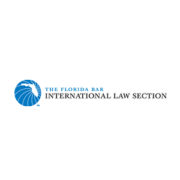Your Recovery Is Mine: Enforcement of Judgments via a Judgment Debtor’s Claims Against Third Parties
Authored By: Daniel M. Coyle – Sequor Law
Introduction
Asset Recovery and Judgment Satisfaction demands access to broad remedies and creative thinking. A Judgment Creditors’ efforts to enforce a judgment may be stymied by property exemptions, wage-garnishment exemptions, trusts, multi-member LLCs, and/or because the Judgment Debtor’s property is held by a tenancy-by-the-entireties (if this manner of holding property is recognized in the state). Judgment Creditors and their counsel should look to other assets that are available, such as claims (also called choses in action) held by Judgment Debtors against others.
Black’s Law Dictionary (rev. 4th Ed. 1968) defines a chose in action as: A personal right not reduced into possession, but recoverable by a suit at law . . . A right to receive or recover a debt, demand, or damages on a cause of action ex contract or for a tort or omission of a duty
Seizure of Claims.
In Florida, for instance, a Judgment Creditor may reach such property via Florida’s Proceedings Supplementary statute, Fla. Stat. §56.29. Subsection (6) of that statute provides that “a court may order any property of the judgment debtor, not exempt from execution, or any property, debt, or other obligation due to the judgment debtor, in the hands of or under the control of any person subject to the Notice to Appear, to be levied upon and applied toward the satisfaction of the judgment debt.” Thus, if a Judgment Debtor has sued a third party, the Judgment Creditor may seize the claim under Fla. Stat. § 56.29. Myd Marine Distrib., Inc. v. Int’l Paint Ltd., 201 So. 3d 843, 845 (Fla. 4th DCA 2016). See also Gen. Guar. Ins. Co. of Fla. v. DaCosta, 190 So. 2d 211, 213–14 (Fla. 3d DCA 1966) (decided under predecessor statute). Other states also permit Judgment Creditors to execute and levy upon these types of assets. See, e.g., Holt v. Stollenwerck, 56 So. 912, 913 (Ala. 1911); Wittenauer v. Kaelin, 15 S.W.2d 461, 462-63 (Ky. Ct. App. 1929); Rucks-Brandt Const. Corp. v. Silver, 151 P.2d 399, 400 (Okla. 1944); Lynn v. Int’l Bhd. of Firemen & Oilers, 90 S.E.2d 204, 206 (S.C. 1955); Maranatha Faith Ctr., Inc. v. Colonial Tr. Co., 904 So. 2d 1004, 1010 (Miss. 2004); Reynolds v. Tufenkjian, 136 Nev. Adv. Op. 19 (2020). Once the Judgment Creditor seizes or attaches the claim, the Judgment Creditor now becomes the plaintiff, or potential plaintiff, as if the claim had been voluntarily assigned to it. The Judgment Creditor thus has full discretion in how to manage litigation of the claim, including full settlement discretion, but also must fund litigation of the claim.
Seeking an Equitable Lien on Claims for Personal Torts.
However, in Florida, a Judgment Creditor may not levy and execute on a claim under section 56.29 if the claim is one for a “personal” tort or the claim is not assignable. Shaughnessy v. Klein, 687 So. 2d 43 (Fla. 2d DCA 1997). Personal torts are those claims that are personal to the plaintiff and that the plaintiff cannot assign, due to the personal relationship of the claim to the victim. Such torts include, but are not limited to, assault and battery, fraud, medical malpractice, (most) legal malpractice, intentional infliction of emotional distress, slander, and malicious prosecution. Forgione v. Dennis Pirtle Agency, Inc., 93 F.3d 758, 760 (11th Cir. 1996), certified question accepted, 689 So. 2d 1069 (Fla. 1997), and certified question answered, 701 So. 2d 557 (Fla. 1997); 21 C.J.S. Creditors’ Suits s 29. YOUR RECOVERY IS MINE: ENFORCEMENT OF JUDGMENTS VIA A JUDGMENT DEBTOR’S CLAIMS AGAINST THIRD PARTIES. ThoughtLeaders4 Fire Magazine • ISSUE 3 44 Other courts also recognize the same limitation. See, e.g., Certified Grocers of California, Ltd v. San Gabriel Valley Bank, 197 Cal. Rptr. 710, 715 (Ct. App. 1983); Blackmore v. Dunster, 274 P.3d 748, 752 (Mont. 2012); Reynolds v. Tufenkjian, 136 Nev. Adv. Op. 19 (2020).
While a Judgment Creditor may not levy and execute upon these types of claims, a Judgment Creditor may use proceedings supplementary to request the Court to craft alternative relief: awarding the Judgment Creditor an equitable lien on the Judgment Debtor’s potential recovery. Although section 56.29 does not contain a specific provision addressing a Judgment Creditor’s right to an equitable lien on a Judgment Debtor’s claim, 56.29(6) states: The court may enter any orders, judgments, or writs required to carry out the purpose of this section, …”.
Cases in Florida have already determined that a judgment creditor may obtain an equitable lien on a Judgment Debtor’s homestead property. Zureikat v. Shaibani, 944 So. 2d 1019, 1022 (Fla. 5th DCA 2006); Whigham v. Muehl, 511 So. 2d 717, 718 (Fla. 1st DCA 1987). Moreover, the case law interpreting section 56.29 states that Proceedings Supplementary “are equitable in nature and should be liberally construed” to provide the broadest relief to the creditor. Ferguson v. State Exchange Bank, 264 So.2d 867, 868 (Fla. 1st DCA 1972); Regent Bank v. Woodcox, 636 So.2d 885, 886 (Fla. 4th DCA 1994). Trial courts also have discretion in crafting appropriate relief for the benefit of the creditor. Myd Marine Distrib., Inc. v. Int’l Paint Ltd., 201 So. 3d 843, 844 (Fla. 4th DCA 2016). Thus a Judgment Creditor’s argument for an equitable lien on the proceeds of a lawsuit for a personal tort stands on solid ground. Other states have recognized similar concepts. See, e.g., Blackmore v. Dunster, 274 P.3d 748, 752 (Mont. 2012) (“Blackmore could petition the court to assign to Blackmore any proceeds from Dunster’s tort action in satisfaction of the judgment debt.”).
Once the Court awards the equitable lien, similarly to an attorney’s charging lien, the Judgment Creditor must file the lien in the docket of the Judgment Debtor’s lawsuit to provide notice to the Court presiding over the Judgment Debtor’s lawsuit as well as the third party of the Judgment Creditor’s interest in the potential recovery. In contrast to the Judgment Creditor’s seizure of the claim, the filing of an equitable lien leaves the management of the claim, including the discretion on settlement decisions, with the Judgment Debtor. The Judgment Debtor also retains the obligation to fund the litigation. A potential drawback is that these factors, combined with the fact that some, most or all of the recovery will flow to the Judgment Creditor may result in the Judgment Debtor losing interest in pursuing the claim, and/or abandoning it entirely.
A potential alternative to the equitable lien would be to monitor the lawsuit, and to timely serve a writ of garnishment upon the third party after the verdict. However, this has the drawback of increased administrative costs due to the need to constantly monitor proceedings, the need to coordinate with a potentially a third party who has nothing to gain by such cooperation and whose interests are still adverse to the Judgment Creditor and the need to time the writ of garnishment (with potential service requirement issues as the writ must be served on the third party, not its attorney in the case).






Leave a Reply
Want to join the discussion?Feel free to contribute!